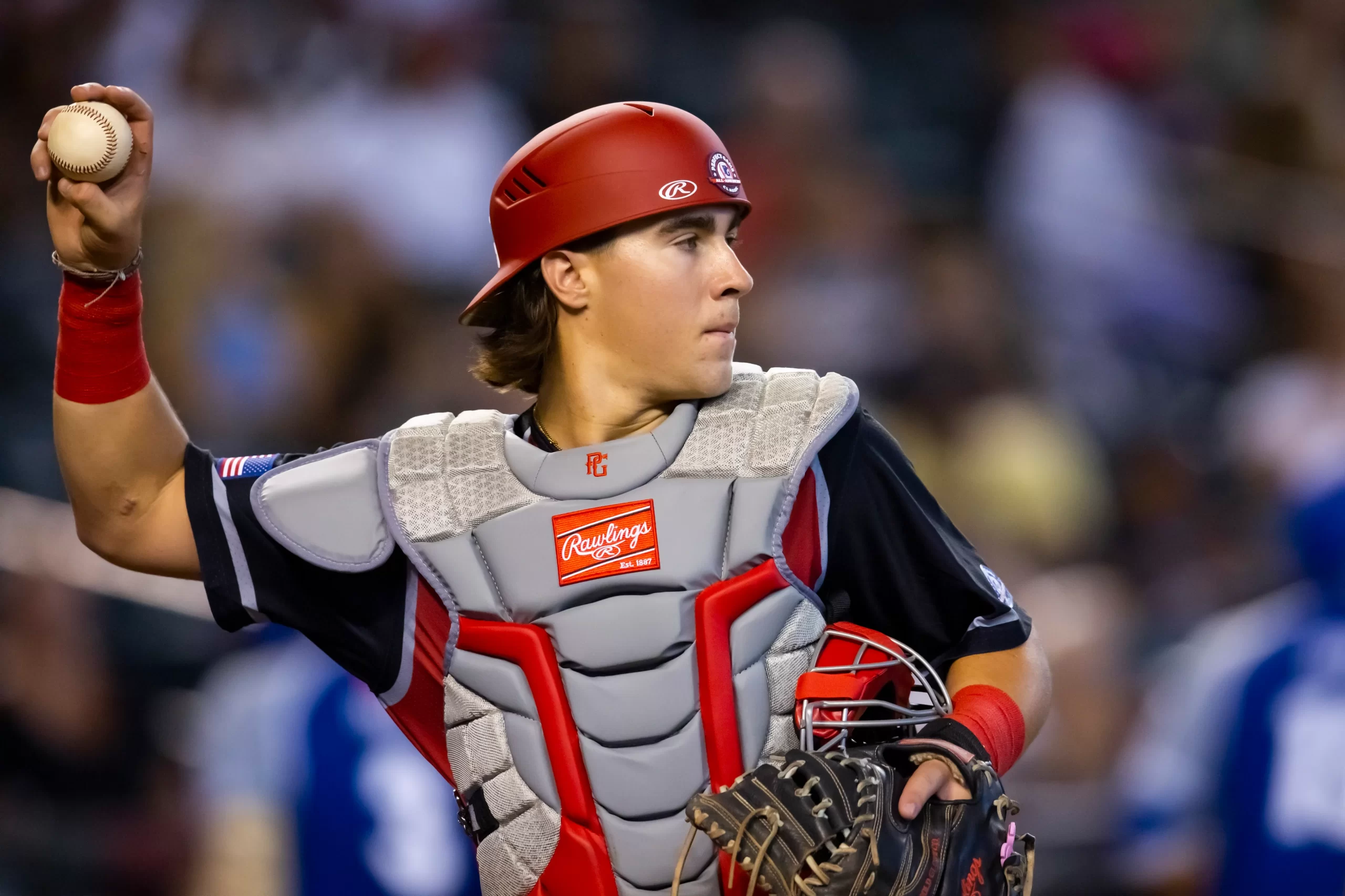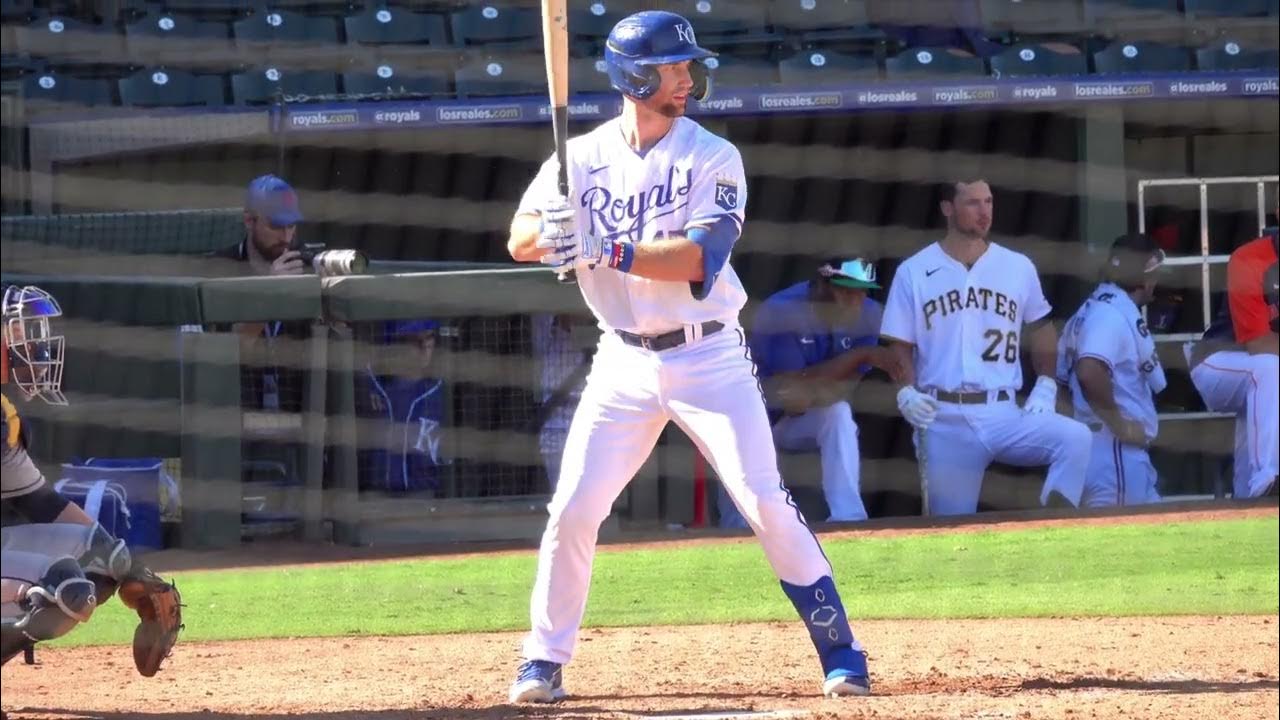The season got started a bit slower for Frank Mozzicato than some of his peers in High-A Quad Cities. The 20-year-old lefty was the Kansas City Royals first-round draft pick in 2021. Since then, he’s worked his way through the system slowly. That’s to be somewhat expected from such a young and raw talent. Mozzicato was drafted out of East Catholic High School in Hartford, Connecticut. Connecticut is hardly seen as a pitching hotbed, but he made waves in high school thanks to his impressive curveball. Perhaps most notably, Mozzicato threw four consecutive no-hitters in the summer before the 2021 MLB Draft.
Since being drafted seventh overall, Mozzicato has shown off impressive strikeout stuff. His debut season in 2022 saw him strike out 29.1% of batters faced. That mark was up to 36.2% in a 12-game sample with Columbia in 2023. That strikeout ability is exactly what enticed the Royals. With the strikeout ability has come issues with command. That command has been what’s limited Mozzicato most thus far in his professional career. He’s walked 16.4% of hitters in the two seasons since being drafted.
A slower start in 2024 aims to give Mozzicato a strong foundation for the season ahead
Much has been made of velocity for Mozzicato and that will again be a key focus for him in the season ahead. He’s sat 88-90mph with his four-seam fastball thus far and that didn’t appear to change much in his first start on Sunday. Mozzicato’s velocity sat at 86-88mph on the day. That velocity won’t get it done against competition in the upper minor leagues — but he isn’t there yet. It was Frank’s first start of the season and the ramp-up for velocity is still in progress. Beyond the velocity, plenty more is being developed for the Royals pitching prospect.
The pitching development team is focused on energy leaks in Mozzicato’s delivery. To attack them, they’re using a NewtForce Mound to help pinpoint where to focus. The NewtForce Mound is still an up-and-coming technology for Major League teams. As of June last year, just seven teams in the big leagues were implementing the technology. The technology helped Paul Skenes last season with LSU, thanks to pitching coach Wes Johnson.
“A key reason he chose to join LSU’s program was the chance to work with pitching coach Wes Johnson and the advanced technologies at his disposal. One of the tools Skenes has credited for his improvement this season is the NewtForce Mound, a sensor-laden, turf-covered slope that tracks a pitcher’s ground forces throughout their delivery.”
NewtForce and how it impacts pitcher development
The NewtForce Mound focuses on ground force and ground reaction data. The force plates in the mound collect real-time ground force data alongside two cameras to provide instant data to the pitcher. The result is a closer look at pitcher timing that heavily impacts everything from velocity to command. Here’s a look at what that data looks like:

I am by no means a NewtForce expert, but I’ll give you the general understanding I have. The green line above measures z-force — how hard the pitcher is pushing into the ground (or in this case, the NewtForce Mound). The red line is the front and backward force. Finally, the blue line is the side-to-side movement by the pitcher. To improve velocity, we’re looking most at the curve created by the back leg impulse. The greater distance between that back leg impulse curve and the zero line usually means more velocity. When the red line drops below zero it means the pitcher has planted their front foot and transferred their momentum off of their back foot.
Here, there can be tweaks made to the release point to help improve pitcher command. The pitcher wants to release the ball at the same time the second green curve reaches its apex. A tad early and they may sail the pitch well out of the zone. A tad late and the pitch likely ends up in the dirt. Putting all of this together is going to do wonders for Mozzicato’s development as a pitcher. First comes improvements in command — finding consistency. Next comes velocity.
Mozzicato’s 2024 debut and what to look for early this season
Mozzicato made his debut on Sunday for the Quad Cities River Bandits. He pitched four full innings, allowing just two hits and no earned runs. He struck out four but also walked three batters in the process. Don’t expect the command to improve overnight as the process is going to take time. Mozzicato leaned heavily on his fastball and curveball in his season debut. Although he generated some downward action with his four-seamer, he hasn’t added a sinker this offseason.
He did, however, add a slider with Cressey Sports Performance last offseason and has started to use it in starts. Although the velocity hasn’t arrived yet, once it does Mozzicato will have a chance to be dominant on the mound. Even without the velocity, he generates plenty of swing-and-miss with his fastball thanks to an excellent vertical approach angle (VAA). He posted a 16.4% swinging strike rate for the Fireflies last season before his mid-season promotion to Quad Cities. Eight of his 26 strikes on Sunday were swinging strikes. On 51 total pitches, that’s a 15.6% swinging strike rate.
That’s impressive all on its own. Drew Thorpe led all qualified pitchers in High-A with a 17.9% swinging strike rate. No one else finished above 14%. With so much success now, it’s easy to see why the ceiling is so high for Frank Mozzicato. Should he take steps forward this season with his command and eventually improve his velocity, there’s the potential for a true ace. That’s exactly why the Royals continue to think so highly of the young lefty.








